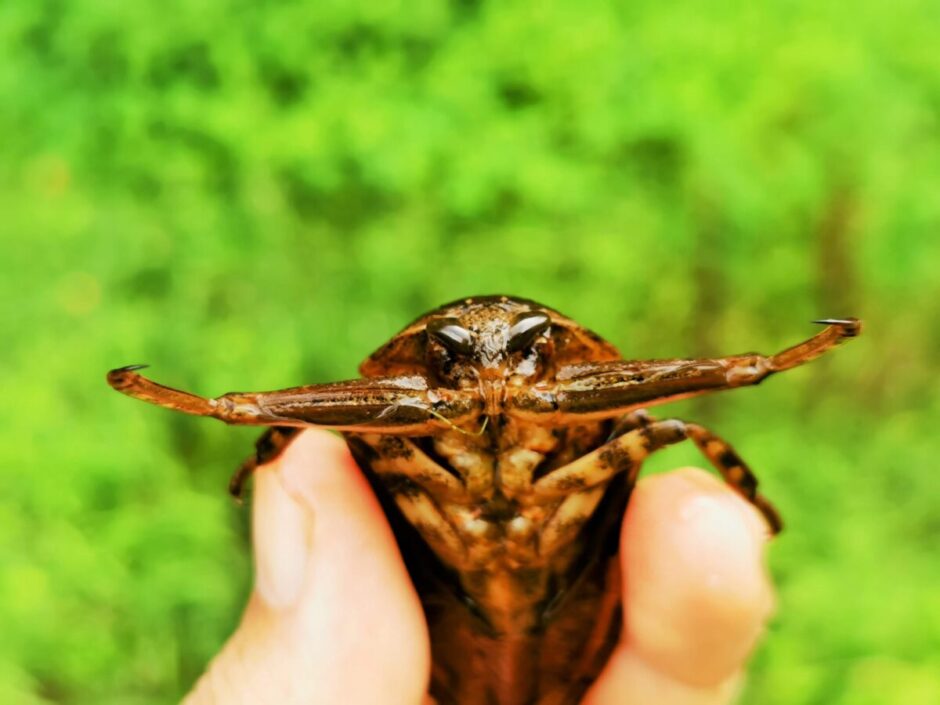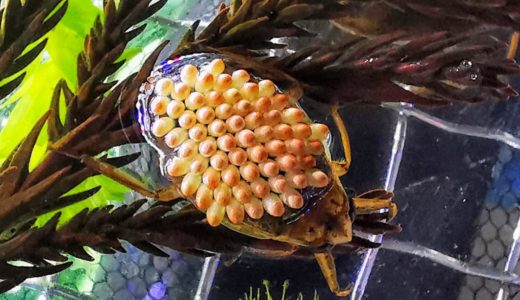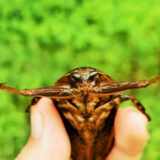As an actual breeder of Giant Water Bug, I can tell you where they live! Giant Water Bug is a large aquatic insect. Giant Water Bug are found in rice paddies, ponds, and lakes, but not so much in fast-flowing rivers. Specifically, where does the Giant Water Bug live?
Species and ecology of Giant Water Bug
Giant water bugs are large aquatic insects, with the largest species measuring nearly 10 cm in length. 005 and 006 in the photo below are Giant Water Bug.

The 005 is a subfamily of Lethocerinae that grows to over 5 cm, and the 006 is a subfamily of Belostomatinae that grows to a few cm. What people are generally searching for as Giant Water Bug is the subfamily Lethocerinae.
This article mainly deals with the Giant Water Bug of the subfamily Lethocerinae, but for more information on the subfamily Belostomatinae, please see the following article.
Giant Water Bug is a hunter that ambushes in the water, catching and eating frogs and small fish with its large paws.


Where do Giant Water Bug live?
Giant Water Bugs live in rice paddies, ponds, and lakes, but not so much in fast-flowing rivers.
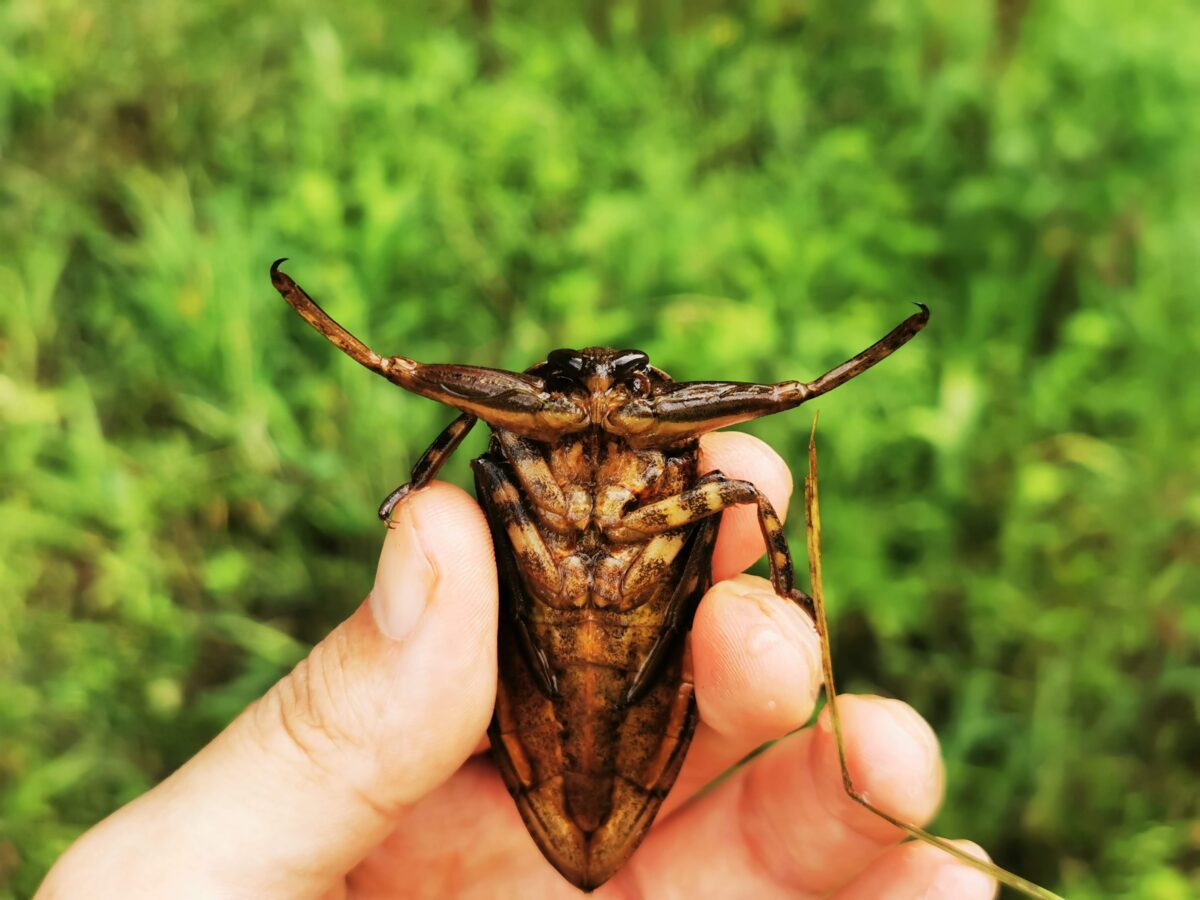

The number of Giant Water Bugs in Japan is so low that you have to look for them to find them. In order to find a place where Giant Water Bug live, it is best to look for a place that has the following conditions.
- Areas where Giant Water Bug have been recent sightings.
- Terrain that is not affected by pesticides, such as hills and valleys
- Areas where invasive alien species such as carp, largemouth bass, bullfrogs and crayfish have not entered.
Giant Water Bug is not found in areas deep enough to require waders. Giant Water Bug is found in marshes that are a few centimeters to 20 centimeters deep that can be accessed with boots.
The Giant Water Bug needs to be close to the surface to breathe through its breathing tube. So it doesn’t need to be deep.


Giant Water Bugs caught in their habitat.
Have any of you ever seen a Giant Water Bug? I see Giant Water Bugs every year in the field and also have them at home.Giant Water Bug in Japan is an endangered and protected species, but it is not subject to hobby breeding.
This video showing that keeping a Giant Water Bug and netting it are two completely different experiences.
Where there are Giant Water Bugs, there are also many other aquatic insects.
Giant Water Bug in Japan feeds on tadpoles as larvae and on frogs and small fish as adults.
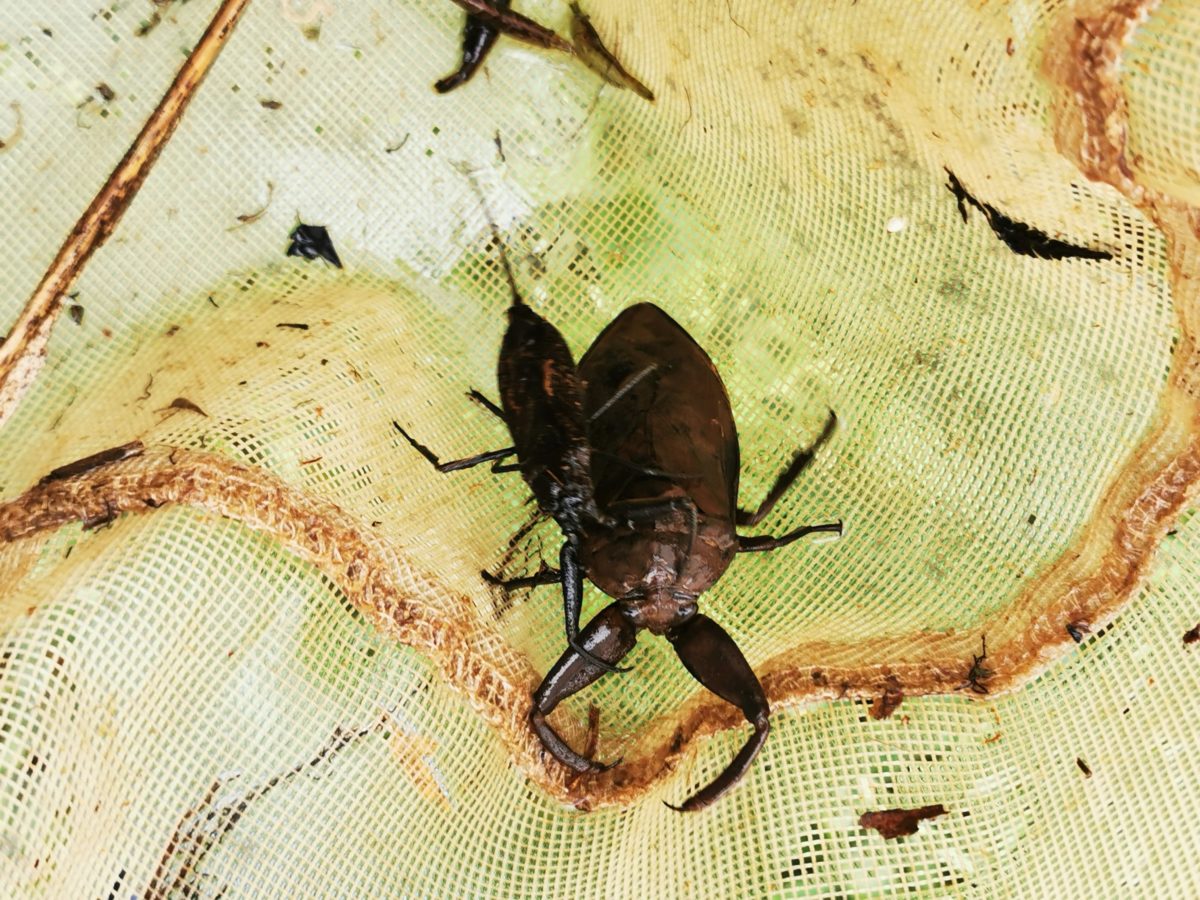

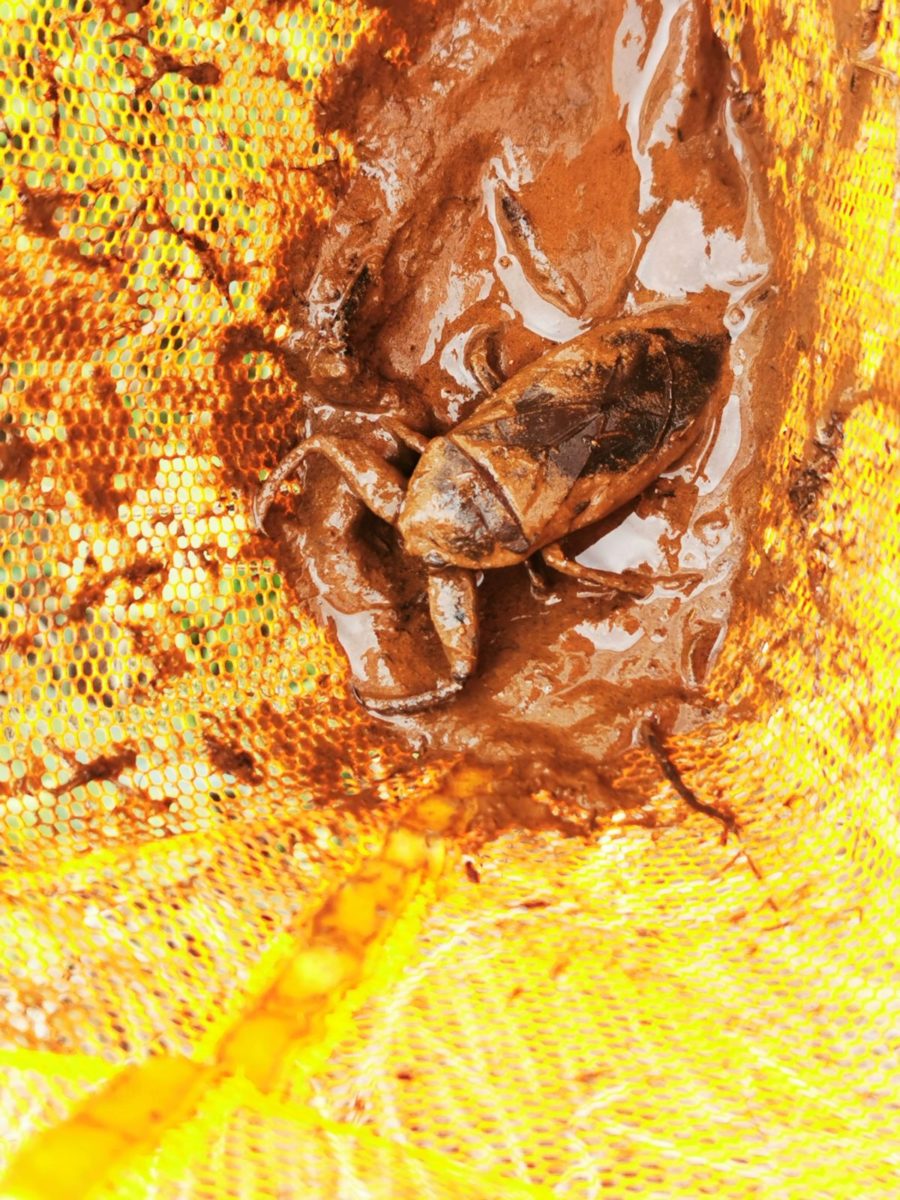

Causes of Giant Water Bug Decline
Giant Water Bug is decreasing in many places. The causes of the decrease in Giant Water Bug are as follows.
- Habitat is lost due to development
- Invasion of invasive alien species
- Die by being attracted to a streetlight
- Die from pesticides such as herbicides
Habitat is lost due to development
Giant Water Bug is the pinnacle of the ecosystem and needs wetlands that are rich in small fish and frogs to feed on. When agricultural waterways are revetted with concrete, the number of small fish and frogs decreases due to the faster flow and the inability of fallen frogs to escape.
It is easy for us to imagine that the pond will be reclaimed and the habitat will be lost.
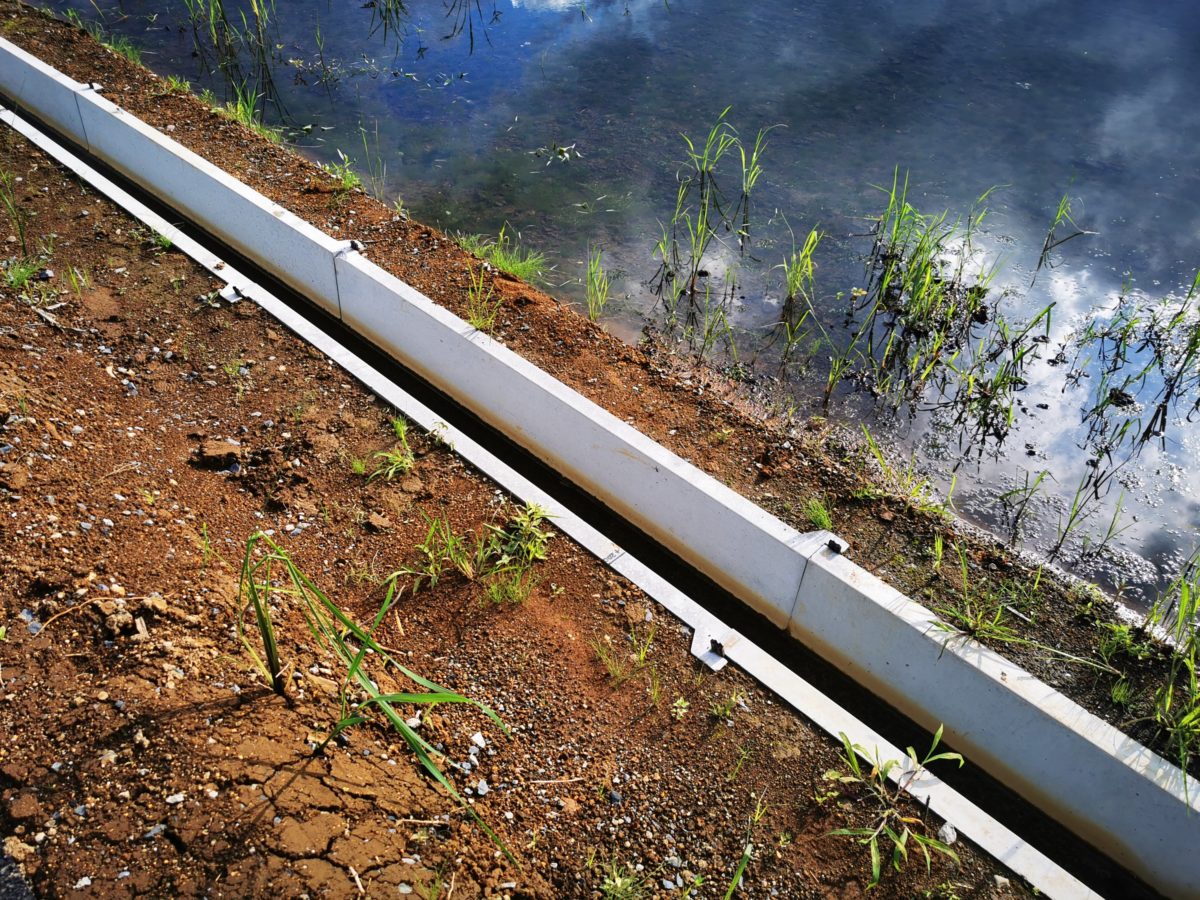

Invasion of invasive alien species
When invasive alien species such as a crayfish (crawfish, Procambarus clarkii) , bullfrog (Lithobates catesbeianus), carp (Cyprinus carpio) and largemouth bass (Micropterus salmoides) invade their habitats, many native species disappear.
For example, crayfish have spread throughout Japan and have become so familiar that plastic models are being made.Crayfish have the ability to alter the environment by cutting water plants. It is well known that many native species disappear from ponds where crayfish have invaded.
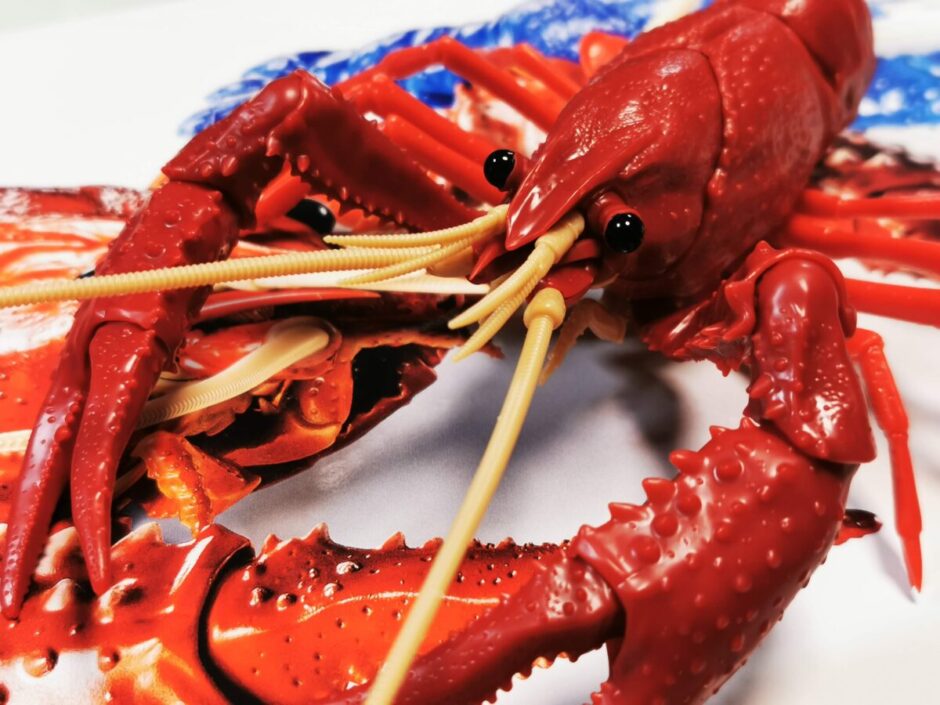

Die by being attracted to a streetlight
Giant Water Bug is called an “electric light bug” because it is attracted to light.Giant Water Bug has a tendency to actively fly and move between ponds during the breeding season.
Although Giant Water Bug does not have a body shape suitable for flying, it is attracted to light and cannot leave the light, so they die. In Japan, there have been several reports of Giant Water Bugs gathering in large numbers during the period when powerful streetlights were installed, wiping out local populations within a few years.
The ability of the Giant Water Bug to attract light is also used in Southeast Asia, where the Giant Water Bug is an insect food.
Die from pesticides such as herbicides
Giant Water Bug is known to be extremely sensitive to pesticides.
Giant Water Bug was common in Japan half a century ago, but has been declining nationwide and became a protected species in 2020. After World War II, the use of pesticides began, and by the 1980s, local extinctions of Giant Water Bug were reported in many places.
There are still areas in rural Southeast Asia where pesticides are not used, and there are so many Giant Water Bugs that they are edible.
